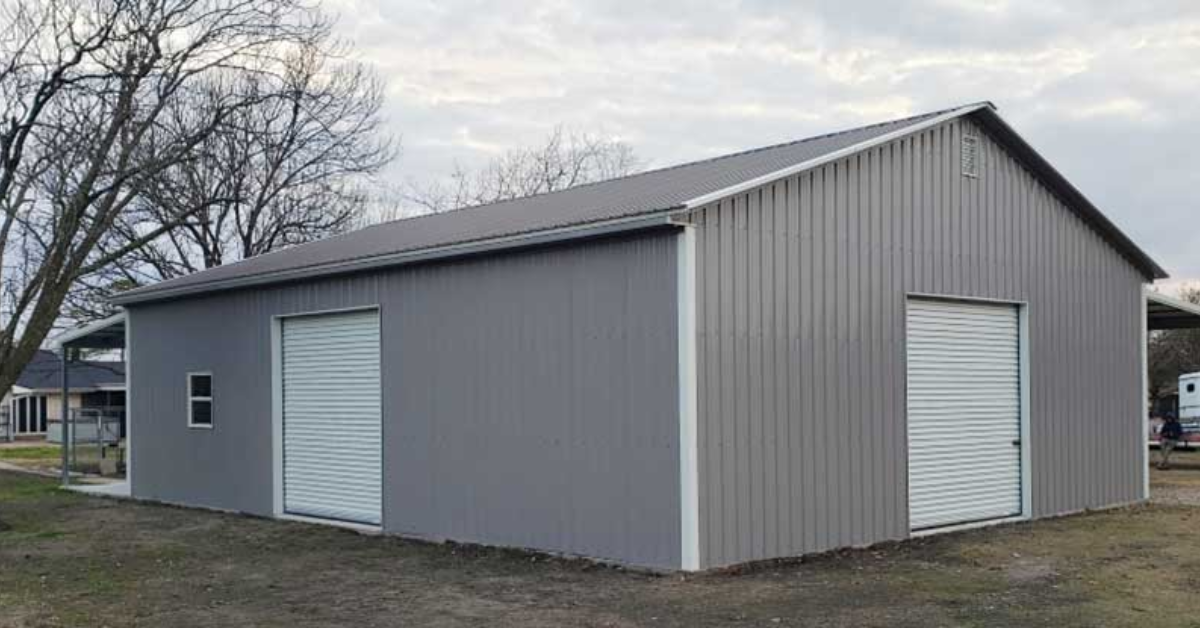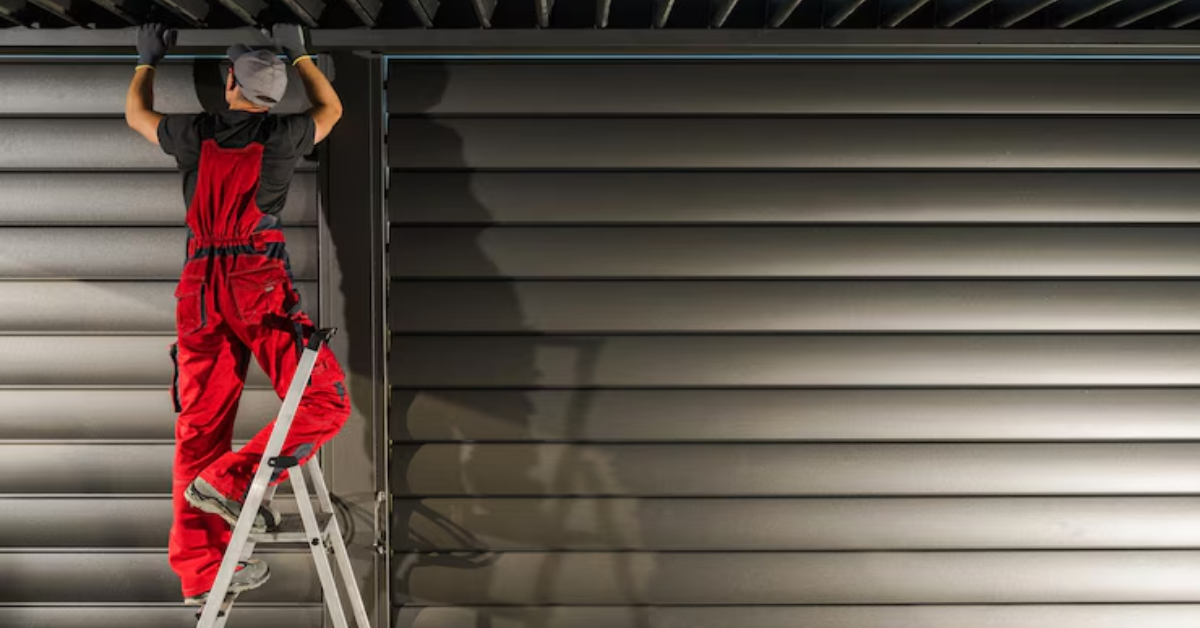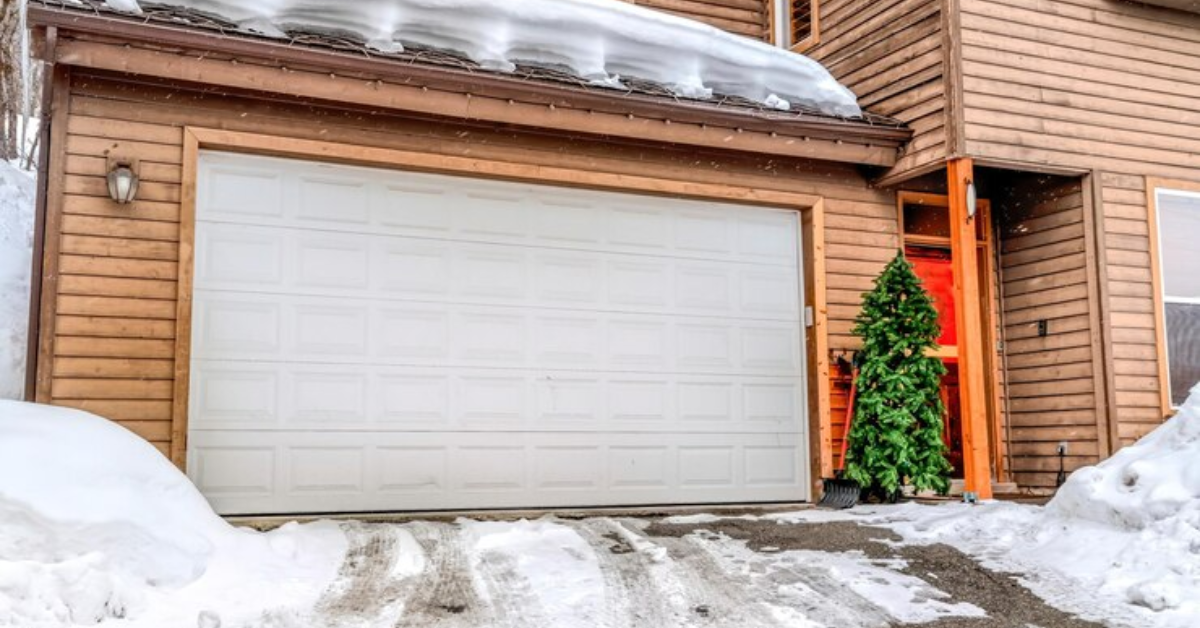How To Frame A Roll Up Garage Door?
Roll-up garage doors offer a versatile and practical solution when selecting a garage door for your home. But what exactly is a roll-up garage door, and why might it be the right choice for your garage?
A
roll-up garage door is a type of door that operates by rolling up vertically into a coil above the opening. Unlike traditional sectional doors that swing outwards or slide horizontally, roll-up doors are designed to conserve space, making them ideal for garages with limited ceiling clearance or narrow driveways.
One of the key advantages of roll-up garage doors is their space-saving design. By rolling up vertically instead of swinging outwards, these doors maximize the available space inside and outside the garage. This not only allows for more efficient use of the garage space but also provides added convenience when parking vehicles or accessing storage items.
Roll-up garage doors are also known for their durability and security features. Constructed from sturdy materials such as steel or aluminum, these doors provide enhanced protection against intruders and the elements. Many
roll-up doors also come with insulation options, helping to maintain a comfortable temperature inside the garage and reduce energy costs.
Proper framing for a garage door is essential for ensuring stability and smooth operation. To learn how to frame a garage door, begin by measuring the rough opening and installing the header, followed by the vertical supports, and finally, securing the frame with nails or screws. Here's a sentence using the keyword "how to install roll-up garage doors":
Learn how to install roll-up garage doors with our step-by-step guide, making the process simple and straightforward for a smooth and secure installation.
Preparing for Installation
Before you begin installing your roll-up garage door, it's important to gather all the necessary tools and materials and take safety precautions to ensure a smooth and safe installation process.
Tools and Materials Needed
To install a roll-up garage door, you'll need the following tools and materials:
- Tape measure
- Level
- Hammer
- Screwdriver or drill
- Saw (if cutting lumber is necessary)
- Ladder or step stool
- Safety goggles
- Gloves
- Protective clothing
Also, you'll need the specific hardware and components that come with your garage door kit, including tracks, brackets, springs, and screws. Be sure to check the manufacturer's instructions to ensure you have everything you need before starting the installation process.
Safety Precautions
Safety should be your top priority when installing a roll up garage door. Follow these safety precautions to prevent accidents and injuries:
- Wear safety goggles to protect your eyes from dust and debris.
- Use gloves to protect your hands when handling sharp or heavy materials.
- Wear sturdy, closed-toe shoes to prevent foot injuries.
- Use a ladder or step stool to reach high areas safely.
- Work with a partner when lifting heavy components to avoid strain or injury.
- Follow all manufacturer's instructions and guidelines carefully.
- Take breaks as needed to prevent fatigue and maintain focus.
- Keep children and pets away from the work area to prevent accidents.
- If you're unsure about any step of the installation process, consult a professional for assistance.
Measuring and Marking
Before you can install your roll up garage door, you'll need to accurately measure and mark the door opening to ensure a proper fit.
Determining Door Size:Start by measuring the width and height of the door opening using a tape measure. Record these measurements carefully, as they will determine the size of the garage door you need to purchase. Keep in mind any obstructions or obstacles that may affect the installation, such as pipes or electrical outlets.
Marking Door Opening:Once you have determined the size of the door, use a level and pencil to mark the door opening on the walls of the garage. Make sure the marks are straight and level to ensure the door will operate smoothly. Use a tape measure to double-check the dimensions and adjust the marks if necessary. It's essential to have precise measurements and markings to ensure the door fits correctly and operates correctly once installed.
By taking the time to gather the necessary tools and materials, as well as following safety precautions, and accurately measuring and marking the door opening, you'll be well-prepared to begin the installation process of your roll up garage door.
Framing the Opening
Before installing your roll-up garage door, you need to frame the opening properly. This involves choosing the right lumber and studs and installing the header and jambs.
Choosing Lumber and Studs:Select sturdy lumber that can support the weight of the garage door. Common choices include pressure-treated wood or engineered lumber. Additionally, ensure that the studs are spaced evenly and securely anchored to the surrounding structure to provide adequate support for the door.
Installing Header and Jambs:Begin by installing the header, which is a horizontal beam that spans the width of the opening above the garage door. This provides support and distributes the weight of the door evenly. Next, install the jambs, which are vertical framing members that attach to the sides of the opening. Make sure the header and jambs are level and securely fastened to the surrounding framing to ensure stability and proper operation of the door.
Installing Tracks and Hardware
Once the opening is framed, you can proceed with installingthe tracks and hardware for the roll-up garage door.
- Start by attaching the vertical tracks to the jambs on each side of the opening. These tracks guide the movement of the door as it rolls up and down. Next, install the horizontal tracks above the opening, connecting them to the ceiling or header. Ensure that the tracks are aligned properly and securely fastened to prevent misalignment or binding during operation.
- After the tracks are in place, mount the springs and tensioning system according to the manufacturer's instructions. These components help counterbalance the weight of the door and ensure smooth operation. Be sure to follow safety guidelines when working with springs, as they can be under high tension and pose a risk of injury if mishandled. Adjust the tensioning system as needed to achieve the proper balance and tension for smooth and controlled door movement.
By framing the opening correctly and installing the tracks and hardware accurately, you'll lay the foundation for a properly functioning roll-up garage door. Be sure to follow the manufacturer's instructions carefully and consider seeking professional assistance if you're unsure about any aspect of the installation process.
Mounting the roll-up door
With the framing and tracks in place, it's time to mount the roll-up garage door. This involves positioning and securing the door properly, followed by testing its operation and making any necessary adjustments.
Positioning and Securing the Door:
- Carefully lift the roll-up door into position, making sure it aligns with the tracks and fits snugly within the opening. Secure the door to the tracks using the appropriate hardware, ensuring that it is level and evenly spaced on both sides. Use shims or spacers as needed to achieve proper alignment and clearance. Once the door is securely in place, attach any additional hardware, such as handles or locks, according to the manufacturer's instructions.
Testing Operation and Adjusting as Needed:
- Once the door is mounted, test its operation by manually raising and lowering it a few times. Pay attention to any unusual sounds or resistance, as these may indicate misalignment or tension issues. If necessary, adjust the tensioning system or track alignment to ensure smooth and controlled movement. Repeat the testing process until you are satisfied with the door's operation, making any adjustments as needed to achieve optimal performance.
Finishing Touches
With the roll-up garage door installed and functioning correctly, it's time to add the finishing touches to complete the installation.
Adding Weather Stripping:Install weather stripping along the bottom edge of the door to seal out drafts, moisture, and debris. This helps improve energy efficiency and protect your garage from the elements. Choose weather stripping that is compatible with your door material and provides a tight seal when the door is closed.
Painting or Sealing Frame:If desired,paint or seal the frame and surrounding trim to protect it from moisture and enhance its appearance. Use a high-quality exterior paint or sealant that is suitable for the material of your frame and can withstand outdoor conditions. Apply multiple coats as needed for durability and longevity, following the manufacturer's instructions for proper application and drying times.
By following these steps to mount the roll-up door, test its operation, and add the finishing touches, you'll complete the installation process and ensure that your garage door functions smoothly and effectively for years to come.
Troubleshooting and Maintenance
Even with careful installation, roll-up garage doors may encounter issues over time. Understanding common problems and their solutions can help keep your door operating smoothly. Additionally, regular maintenance is essential for prolonging the lifespan of your garage door.
Common Installation Issues and Solutions:
- Door Misalignment: If the door is not closing or opening properly, check for misaligned tracks or rollers. Adjust the tracks and tighten any loose hardware to ensure smooth movement.
- Noisy Operation:Squeaking or grinding noises may indicate worn rollers or inadequate lubrication. Apply a silicone-based lubricant to the rollers, hinges, and tracks to reduce friction and noise.
- Uneven Closing:If one side of the door closes faster than the other, check for obstructions in the tracks or worn springs. Clear any debris from the tracks and inspect the springs for signs of wear or damage. Replace worn springs as needed to restore balance.
- Remote Control Malfunction: If the garage door opener is not responding tothe remote control, check the batteries and ensure they are properly inserted. Reprogram the remote control according to the manufacturer's instructions if necessary.
- Weather Stripping Damage: Over time, weather stripping may become worn or damaged, compromising the door's seal. Replace damaged weather stripping to maintain energy efficiency and protect against moisture and drafts.
Tips for Maintaining Roll-Up Garage Doors:
- Conduct visual inspections of the door and hardware to check for signs of wear, damage, or misalignment. Address any issues promptly to prevent further damage.
- Apply a silicone-basedlubricant to the rollers, hinges, tracks, and springs annually to ensure smooth operation and prevent rust or corrosion.
- Periodically check and tighten all nuts, bolts, and screws to prevent loosening due to vibration or movement.
- Remove dirt, debris, and grease buildup from the tracks regularly to prevent obstruction and ensure proper door movement.
- Schedule annual maintenance with a qualified technician to inspect and service the door, springs, andopener system. Professional maintenance can help identify and address potential issues before they escalate, prolonging the lifespan of your garage door.
By troubleshooting common installation issues and following these maintenance tips, you can keep your roll-up garage door operating smoothly and efficiently for years to come.
Conclusion
Installing roll-up garage doors involves several key steps, including framing the opening, mounting the door, and adding finishing touches like weather stripping and painting. By following these steps carefully and addressing any common installation issues, homeowners can ensure smooth and efficient operation of their garage doors. Additionally, regular maintenance is essential for prolonging the lifespan of roll-up garage doors and preventing issues from arising. With proper installation and maintenance, roll-up garage doors can provide convenience, security, and functionality for years to come.




